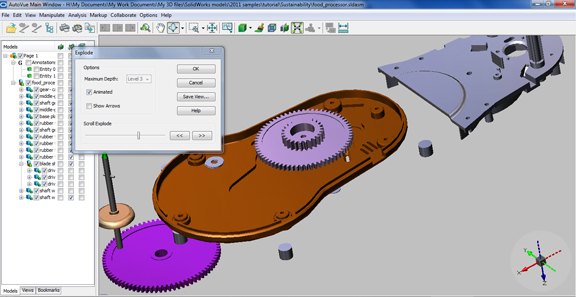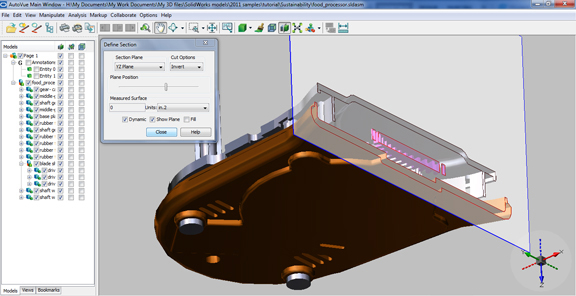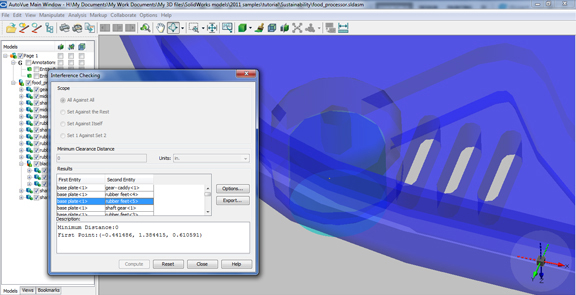Latest News
May 24, 2011



Before the product was known as Oracle AutoVue, it was Cimmetry AutoVue. It was a no-nonsense, no-frill application for viewing and marking up 3D CAD files. If you need to inspect, approve, and share different types of CAD files, a viewer like AutoVue is the perfect solution, because it lets you do your job without installing and learning to master a variety of expensive CAD software.
After Cimmetry Systems was acquired by PLM (product lifecycle management) software supplier Agile, Agile itself was acquired by Oracle. This landed Cimmetry AutoVue in Oracle’s lap. Under Oracle’s stewardship, AutoVue returns as a viewer embedded within Oragle Agile, a suite of Oracle-branded PLM applications. (AutoVue can still be deployed as a desktop application, but Oracle points out that you won’t get its full value if you choose that option.)
Oracle AutoVue 20.1 reflects the product’s origin as a simple, straightforward viewer. Basic zoom, pan, and rotate functions are consistent with how you’d expect them to work in CAD programs. Explode gives you a slider bar you can use to view, in animation, how different parts come together in your assembly. Transform gives you the option to rotate a part by its center or move it along a selected axis—a handy tool to test out different placement options and potential clashes. The application also comes with a general Clash Detection command so you can run it to identify all contacts and clashes, then review the results one at a time to decide how to resolve them.
You may also use the Sectioning command in AutoVue to virtually slice through your part or assembly. In the dialog box, a drop-down menu lets you pick the desired cutting plane, then position it using a slider bar. Depending on your selected viewing option, you can see the cross-sectioned design as a 2D cutout with edges or a sliced up assembly.
Measurement tools in AutoVue let you pick specific components on features (vertices, faces, edges, centers, and so on) and obtain the distance between them. The same granular approach can be used for your comments and notes, so you can associate a certain comment to a vertice or a face or a feature. The annotation dialog box gives you the option to attach a file or insert a URL as well.
Perhaps the strength of AutoVue is how well it fits into the rest of Oracle’s Agile PLM modules. With AutoVue as the de facto viewer, you can set up items in your BOM so that, whenever you double-click on a thumbnail, it automatically launches AutoVue. If fully integrated with the PLM system, AutoVue-related actions—like adding comments and notes—automatically creates a trail in the PLM module, giving you a way to keep track of the changes requested and executed on your design.
In 2D drawings, such as electronic routing systems and piping diagrams, you may link each joint, connection, or intersection to meta data fields in an ERP, supply chain, or inventory system. This gives you the ability to quickly obtain critical data about your design (such as the last time a valve was examined by a crew or compliant requirements, for example) right from AutoVue with a simple mouse click, without launching the enterprise system itself.
There’s still a market for independent viewing and markup tools, because many engineers and designers still have to juggle numerous file formats. Oracle’s approach—a viewer embedded inside an ERP or PLM system—turns the viewer into something else. Inside Agile, AutoVue not just a desktop application to look at 3D models without a CAD program but a visual interface to manage design changes, keep track of assignments, and monitor associated activities from the rest of the supply chain.
For more, watch the video clip below:
Subscribe to our FREE magazine, FREE email newsletters or both!
Latest News
About the Author
Kenneth Wong is Digital Engineering’s resident blogger and senior editor. Email him at [email protected] or share your thoughts on this article at digitaleng.news/facebook.
Follow DE





